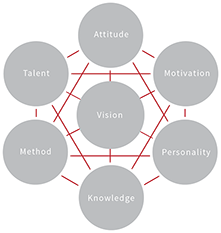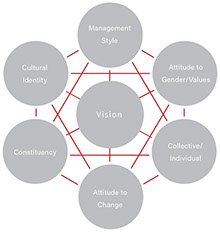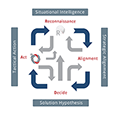Glossary
Logout
©Copyright Arcturus 2022, All Rights Reserved.
7
Terms & Conditions
|
|
|
|
Security & Privacy
Contact
TOUCHPOINTS
Strategic Intent objectives / strategies defined and cascaded with military precision. There are 5 defined TouchPoint groups that interactively cover the entire Product Management activity. Complete management control.
“…Best Practice Product Management requires both pro-active and
timely management of the product TouchPoints…”
TouchPoint methodology is both fundamental and instrumental in the management of multidisciplinary teams throughout the Product LifeCycle. TouchPoints are active nodes across all defined PMM phases and as such become a core activity of Product Management.
The purpose and objective of each TouchPoint is to cascade/deliver ‘strategic intent’ in the most efficient and effective way possible. In total, there are five defined TouchPoints covering every aspect of the Product Management Activity. The TouchPoints are defined as: Programme Management, Strategic Planning, Marketing Environment, Internal Efficiency and Innovation. Each of these TouchPoints are representative of multidisciplinary teams, whereby functional owners are defined and objectives managed accordingly.

Arcturus7 architecture & content : Steve Heron, IPM
|Highly Effective Teams and the Management of Natural Talent
Creative Culture Assessment
Cultural Variations
Hidden talents are revealed to us through our creative imagination. Just as we may say to ourselves ‘never in a million years could I do that’ – because we recognise our limitations, so we imagine what we could do well – given the opportunity.
Remember that talent is innate, it is natural ability. All living creatures need specialised talent to survive. Human beings are especially talented in:-
- Language and communication
- Organisation and co-operation
- Reasoning and understanding
- Learning and teaching
- Calculation and evaluation
- Curiosity and imagination
- Exploration and discovery
- Anticipation and co-ordination
- Dexterity and multi-skilling
Creative thinking gives us the potential to find personal happiness and fulfilment through the realisation of our natural abilities.
Every human being is born with a range of talents, just as all living creatures are born with specialised talents. For example, birds that sing, fish can swim, monkeys can climb and so. All of these talents are natural skills that enable the creatures to adapt and survive in their own particular environment. Human beings on the other hand have the ability to create and adapt their own environment as for example: to write books, to paint, to compose music and play musical instruments, to fly, to go under water, to explore the planets, to build cities and so on. In other words, human beings are multi-talented.
All of these talents have been developed through our human creativity combined with a natural physical dexterity applied with intelligence. Whilst everyone possesses a range of talents, by virtue of being human, we cannot be good at everything. But by the application of the Seven Attributes we can develop perhaps just one talent to its highest potential level so as to give us a competitive advantage in that one specialist field.
Some people are naturally gifted so that everything seems to be easy for them, most of us however have to work hard to develop what talents we have. The secret is to discover our ‘menu’ of talents and then choose from that menu the one or two talents that we can really work at to develop in the most effective way.
How can we discover what hidden talents we possess, that perhaps if developed, could transform our lives and prospects?
The clue is in the first of the Seven Attributes: ATTITUDE.
Attitude is a way of thinking that is directional. Our attitude towards people and things incline us to think favourable of them or turn us away. An attitude is a mental inclination, a disposition or a tendency to attract or repel us.
We are attracted towards people and things for which we have an affinity or natural liking or agreement. How often have we seen someone or something we admire and say ‘I would love to be able to do that or be like that’. Or one the other hand: ‘I couldn’t do that or be like that for all the money in the world’.
We are expressing our natural feelings about these subjects that give us a guidance to our own tendencies and talents. In seeking to discover our range of talents, we can discount all of those things we genuinely dislike doing and could not imagine ourselves doing under any circumstances. We can make a reasonable assessment, based on self-knowledge, of those things we find attractive but for which we know we do not have any ability.
This leaves us with the things we admire and believe that given the opportunity and commitment, we may be able to do well. These are those talents for which there is a development potential.
Be on the lookout for those people, activities, events, situations, objects that you admire and find interesting. Assess your TDP for each in your mind. Imagine what it would be like to be like those people and in the imagination practice doing those things that make those people attractive and interesting.
Above all be practical and realistic through self-knowledge.
Cultural Features - Team Assessment
Research has shown there are common features that describe what it is like to live and work in any culture, traditional or modern. As we wish to build these cultural values into our own organisation, so we can use the features as a guide to cultural team building.





8 Cultural Features - Cultural Measurement for High Performance Teams
1. Distinctive
- Does your team have a distinguishing name, a special place of work or other distinctive features that give it a clear identity?
- Do you enjoy being a member of your team, is there a social side to team membership?
- Does your team have special roles and duties that make it different from other teams in the organisation?
- Does your team give a good impression to other groups/teams in the organisation?
2. Satisfying
- How satisfying is it to be a member of your team?
- Do you take pride in being a team member?
- Do you have confidence in your team’s abilities to meet its goals?
- Are you able to work to your full personal potential as a team member?
3. Protective
- Is due regard paid in your team to the health, safety and security of its members?
- Is there a feeling of sharing and belonging in your team?
- Do team members help each other when difficulties and problems arise?
- Are members of the team loyal to each other and to their team?
4. Inclusive/ Exclusive
- Is every team member respected and valued as a human being irrespective of his/her team status?
- Are there ‘us and them’ divisions or other conflicts within the team that reduce its effectiveness?
- Does the team and its members work well with other groups/teams in the organisation or are there competitive us and them barriers?
- Do you and other team members feel that you are all working for the one ‘superordinate’ corporate team – to achieve the organisation’s goals?
5. Objective/Subjective
- Are team goals clearly stated so that everyone is aware of them?
- Do the team members ‘own’ their team’s objectives and do their best to achieve them?
- Does the team get recognition when it has achieved its goals?
- Do you and other team members get individual feedback of information and personal recognition of achievements?
6. Instructive
- Do team members’ train together as a team?
- Are you and other team members encouraged to improve your skills and performance levels?
- Does your team practice multi-skilling and sharing of duties?
- Is there a good level of discipline in your team, are the disciplinary procedures firmly, and fairly followed?
7. Continuous
- Is there a high turnover of membership in your team?
- Is there a good continuity of policies and actions in matters affecting your team?
- Do you have team meetings and briefings and are the decisions taken carried through consistently?
- Is there a good sense that your team is making a valuable contribution to the organisation in helping to achieve its goals?
8. Creative/Innovative
- Are the ideas and suggestions of individual team members considered and developed by the team?
- Are ideas and suggestions from outside the team welcome?
- Are there regular team meetings/briefings to discuss ideas and sort out problems?
- Does the team keep itself informed of changes/innovations being made in the rest of the organisation?
Arcturus7 architecture & content : Steve Heron, IPM
|Product Management Framework and TouchPoint Management Alignment
The principles of best practice Product Management lies in a robust planning structure. The principles of the PM methodology ensure that any product/project falls into one of the following time related phases. This enables a common set of process deliverables to be defined as follows:


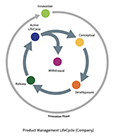

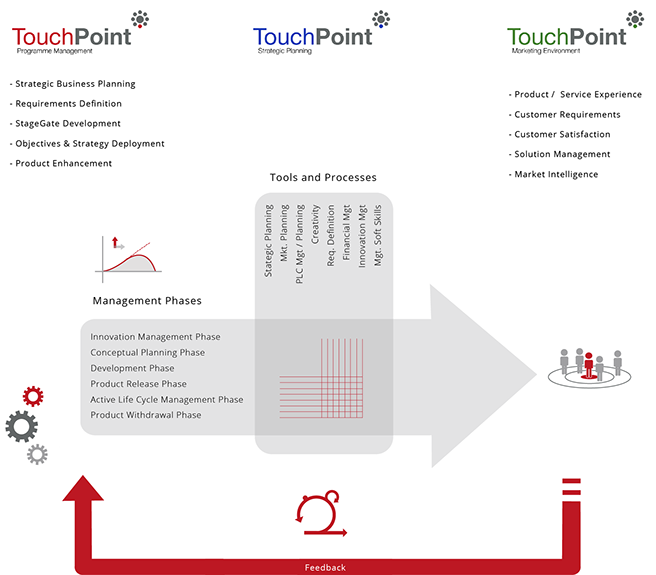
Arcturus7 architecture & content : Steve Heron, IPM
|PM - Market Development & Operational Alignment
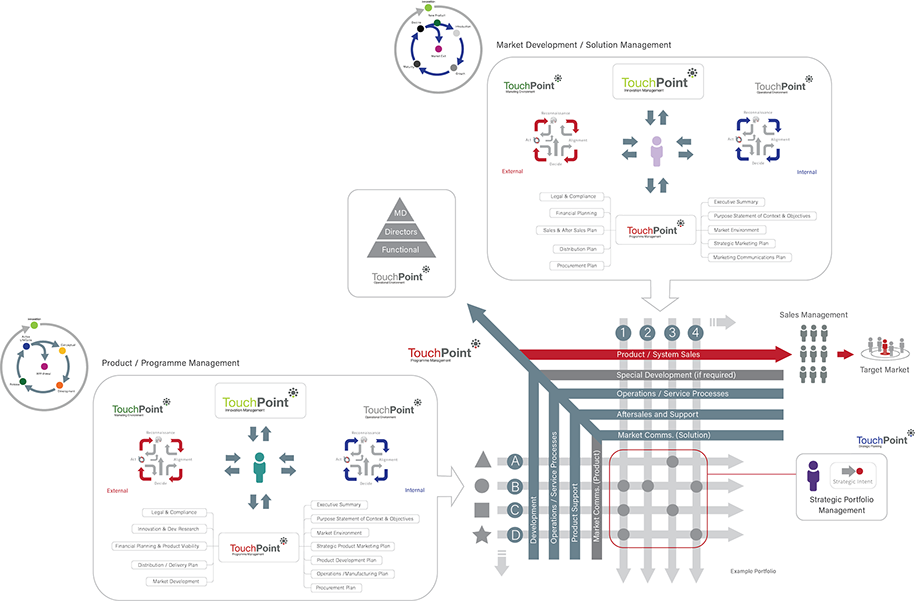
Arcturus7 architecture & content : Steve Heron, IPM








